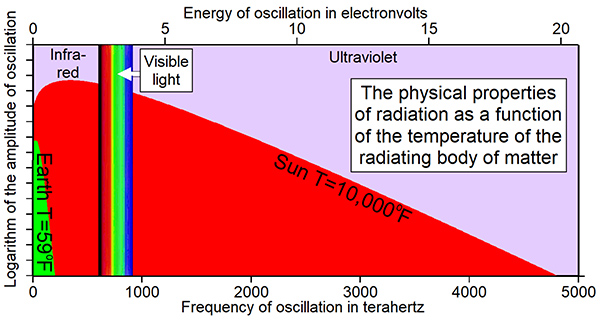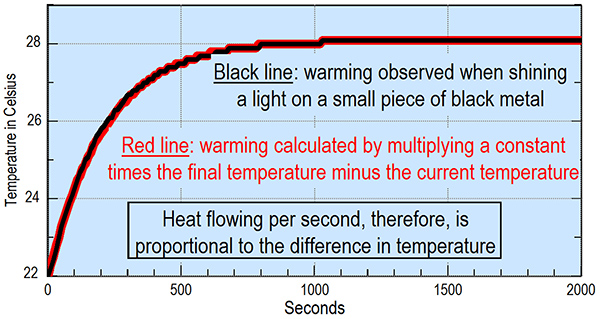Greenhouse-warming theory is rapidly becoming the most expensive mistake ever made in the history of science.
The world warmed 1.1 degrees Fahrenheit from 1970 to 1998 and 0.5 degrees from 2014 to 2016. There was, however, no significant warming from 1950 to 1970, from 1998 to 2013, and since 2016 even though concentrations of carbon dioxide kept rising at ever increasing rates.
During glacial cycles, increases in carbon dioxide concentrations typically follow increases in temperature by several hundred years, the time it takes to warm oceans. A warmer ocean is well-known to absorb less carbon dioxide. Direct evidence that increasing concentrations of greenhouse gases caused observed warming is weak throughout Earth history.
In 1859, Tyndall observed that infrared radiation emitted by Earth was absorbed by greenhouse gases. In 1896, Arrhenius estimated that doubling carbon dioxide concentrations could explain warming at the end of the last ice age. In 1900, however, Ångström, a radiation physicist, showed that carbon dioxide absorbs less than 16% of the radiation emitted by Earth and that this limited absorption has little effect on air temperature.
Interest in greenhouse-warming theory waned until 1938 when Callendar, a steam engineer, started promoting greenhouse-warming theory again. Callendar summarily dismissed Ångström’s work without discussing the physics. To this day, no physicist has shown by experiments, a cornerstone of the scientific method, that increased concentrations of carbon dioxide can physically lead to degrees of warming as explained at JustProveCO2.com. While thousands of scientists have written tens of thousands of scientific papers supporting the “scientific consensus on climate change”, none have critically evaluated the physics of global warming. It is a breakthrough in the physics of heat that shows why greenhouse warming theory is mistaken.
Physicists today observe that all chemical bonds holding molecules of solid matter together are not rigid. They oscillate back and forth at trillions of cycles per second. We perceive these oscillations as temperature within solid matter. Current concepts about thermodynamics, however, were formed beginning around 1798, long before scientists began to understand that matter is made up of atoms and molecules.
Still today, heat is defined as an amount of thermal energy in transfer—a flux. Greenhouse-warming theory is built on the assumption that these amounts of heat can be added together. The greater the amount of heat absorbed, the hotter the body will become. These assumptions seem quite logical and are, today, central to the physics of heat and to greenhouse-warming theory.
But this definition of heat does not consider what heat actually is physically or how heat physically flows through solid matter, air, and space.

Thermal radiation consists of a broad spectrum of frequencies, each with an amplitude dependent on the temperature of the radiating body.
Extensive measurements in the laboratory, summarized in the first figure, show that heat consists of a very broad spectrum of frequencies of oscillation of all the bonds holding solid matter together. Heat radiated by Sun, shown in red, includes much higher frequencies and amplitudes of oscillation than heat radiated from Earth, shown in green.
Note in this figure that the warmer the body of solid matter, the greater the amplitude of oscillation at each and every frequency and the greater the frequencies with the maximum amplitudes of oscillation. This means that a body of matter can only be warmed by absorbing radiation if that radiation comes from a warmer body containing higher amplitudes and frequencies of oscillation. No body of matter can be warmed by absorbing its own radiation. If that were possible, we would have an endless source of free thermal energy. The Earth-atmosphere system cannot be warmed physically by absorbing its own radiation as assumed in greenhouse-warming theory because its own radiation does not contain the required higher amplitudes at each frequency.
The second key problem is that greenhouse-warming theory assumes different sources of heat can be added together. If you take two bodies of matter that are identical in every way except temperature and connect them together, the resulting temperature is the average of the two initial temperatures, not the sum. That means that the flow of heat is done by averaging, not by adding.

Heat flowing per second is proportional to the final temperature minus the current temperature, as expected for flow via resonance.
The importance of averaging is shown even more clearly in the second figure. All curves of warming and cooling have a distinctive asymptotic shape where they approach their final temperature very slowly. The change in temperature at any moment is proportional to the average of the current temperature with the final temperature. In Nature, heat and the resulting change in temperature are averaged.
For these reasons and many more, greenhouse-warming theory is clearly mistaken as explained in detail at Physically-Impossible.com. Major warming predicted for future decades by greenhouse-warming theory cannot and will not happen.
All periods of warming since 1950 and throughout Earth history can be explained in considerable detail by depletion of the ozone layer, allowing an increase in very hot ultraviolet-B radiation reaching Earth as explained at WhyClimateChanges.com. Ozone-depletion theory predicts that global temperatures will decrease slowly over the next few decades as the ozone layer recovers.

Dr. Peter L. Ward
Dr. Peter L. Ward earned a PhD at Columbia University and worked 27 years as a geophysicist and program leader for the United States Geological Survey. After retiring, he has been able to put his full-time effort since 2006, at his own expense, into trying to understand what really causes global warming.
Contact: Dr. Peter L. Ward, WhyClimateChanges.com, co2impossible@gmail.com
In this episode, I sat down with Beejan Giga, Director | Partner and Caleb Emerson, Senior Results Manager at Carpedia International. We discussed the insights behind their recent Industry Today article, “Thinking Three Moves Ahead” and together we explored how manufacturers can plan more strategically, align with their suppliers, and build the operational discipline needed to support intentional, sustainable growth. It was a conversation packed with practical perspectives on navigating a fast-changing industry landscape.